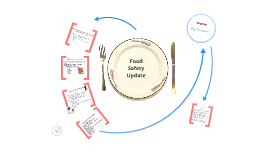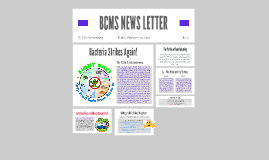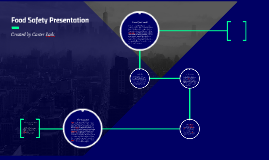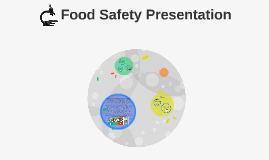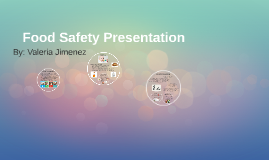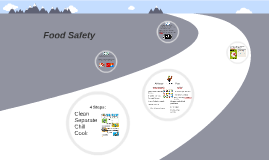Food Safety Presentation
Transcript: We all love food, right? But do we all acknowledge that food is dangerous and can be poisonous? Well, it is true. Don't start panicking, but if food is not prepared or dealt with the correct way, it can be deadly or harmful. You see, it all falls into the categories of Clean, Cook, Chill, and Separate. You want to clean your utensils, dishes, counters, and other things safely. There is a danger zone, which is different for every meat, but it usually falls around 140 to 165 degrees Fahrenheit. Meat, needs to be cooked and served above the danger zone, because bacteria thrives and multiplies more easily when the meat is in the danger zone. You need to refrigerate and freeze, or chill, the foods that need that care within 2 hours of them being taken out. Lastly, you need to separate different food items from each other. Make sure to separate raw and cooked foods from each other, and use clean utensils for each ingredient! Be food smart! So ... Who Were Our First Victims? Where is the harm in hotdogs and coleslaw? Well, Max found the harm in them. You see, he was really hungry on May twentieth, and so he ate one-day old leftover coleslaw, and some "fully cooked" hotdogs that he found in the refrigerator. Later, when he was throwing the hotdog package away, he noticed that the expiration date was May tenth. It was ten days expired! It sure was not fun when he experienced a fever, headache, and some nausea, all of which are symptoms of Listeria Monocytogenes, exactly ten days later. The hotdogs, and Max's "ignorance", of course, caused him to get this pathogen. The ten days are in the onset of this disease, so it perfectly matches the case. We would really like to thank the following: Kevin We don't expect tilapia, or fish, and green beans to harm someone. This is especially when the tilapia is immediately put on the grill once it has been pulled out of the refrigerator, and the fish's internal temperature once it was cooked was 150 degrees. However, the homemade can of green beans that was stored in the pantry didn't make the usual popping sound when the seal was broken. The next day, at the same time he ate the food, he experienced blurred vision, and difficulty speaking and swallowing. Kevin got Clostridium Botulinum, based on his symptoms, how long it took for them to appear, and what the food causes are. Home-canned Green Beans are the Culprit "The food you eat can either be the safest and most powerful form of medicine or the slowest form of poison." - Ann Wigmore Friday, February 26, 2016 $1.25 The Victims of Food Poisoning Giving Credit is Indeed Important Quotation of the Day Bacteria Strikes Again! And YOU! (For taking time to watch/read this presentation) http://www.fightbac.org/food-poisoning/causes-symptoms http://www.fightbac.org/free-resources/logos-and-graphics/ http://media-cache-ec0.pinimg.com/736x/f2/7c/3f/f27c3f60c4002368dabe81c1432f19f4.jpg http://clipartion.com/wp-content/uploads/2015/10/smiley-face-with-thumbs-up-0-warren-expressed-warren.jpeg Lily is your average schoolgirl, who is in a big hurry at 8 A.M. on April second. She asked her brother to make her scrambled eggs with cheese. He agreed, but he had never made what she requested before. However, he tried, and let the eggs cook until the outside looked done. When Lily was eating them, they were more runny than usual, and didn't taste like they normally do. That evening, she experienced vomiting, diarrhea, and a fever. These, among one other, are all symptoms of the pathogen Salmonella. Salmonella usually "kicks in" eight to twelve hours after eating, and there are many food sources to cause it. Eggs are included in the "culprit list". Therefore, this case is ended, revealing that Lily did indeed get the pathogen Salmonella. By Ella Lichtenberg Today we will learn about Kevin, Max, and Lily. This includes what food they ate, how it was prepared, the symptoms they experienced, and what illness[s] they got. Expired Hotdogs are the Culprit Sources Used for Quotes and Images Scrambled Eggs and Cheese Cause Harm! By Ella Lichtenberg BCMS NEWS LETTER Max The Victims of Food Poisoning Information about Lily...






